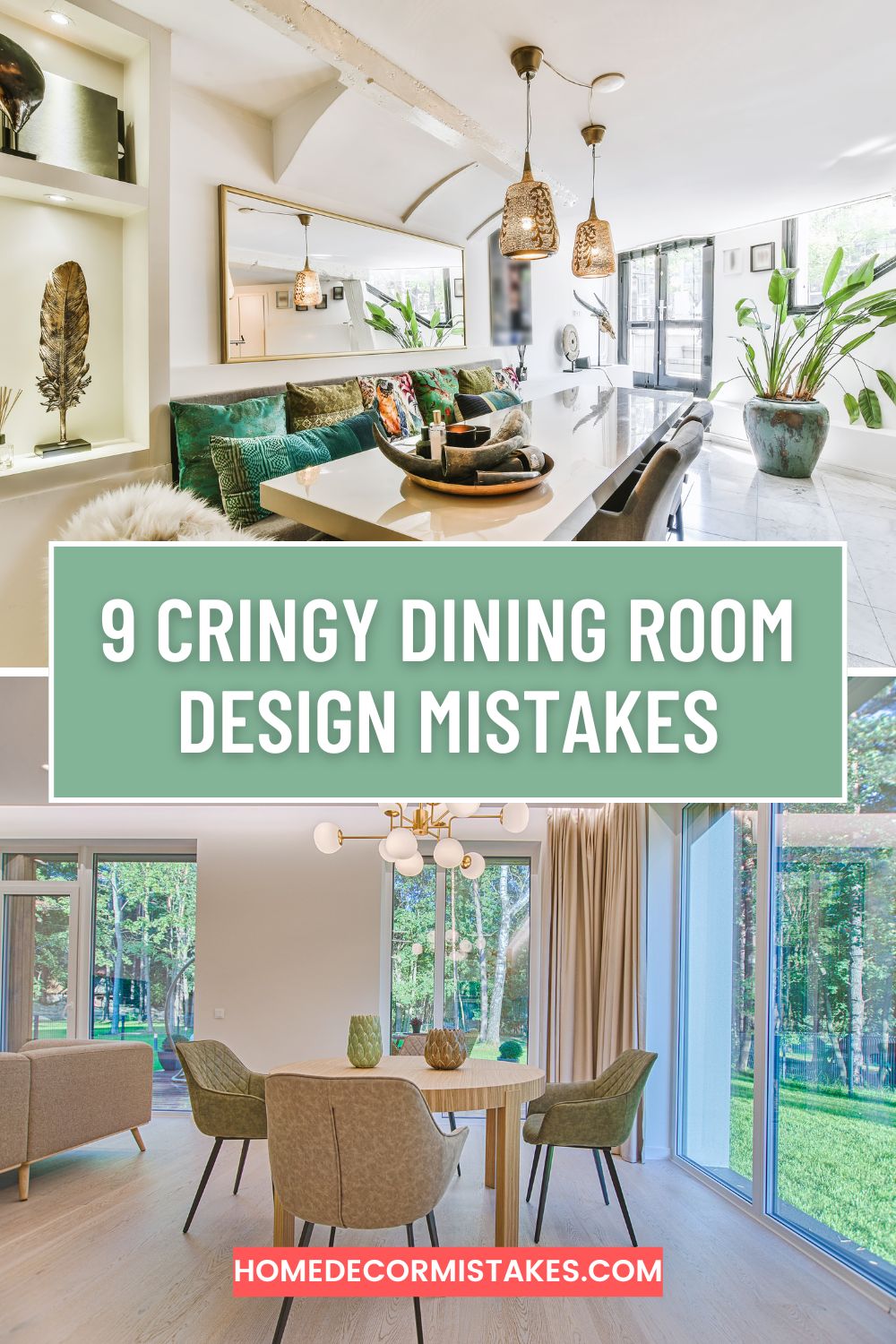9 Dining Room Design Mistakes That Will Make You Cringe
Your dining room is more than just a place to eat; it’s a space where you entertain guests, celebrate special occasions, and spend quality time with family. However, designing this multifaceted room can be tricky. Some common design mistakes can turn your dining room into a cringeworthy spectacle rather than a chic, inviting space. Here are nine dining room design mistakes you should avoid to ensure your dining area is both functional and aesthetically pleasing.
1. Ignoring Scale and Proportion
One of the most frequent mistakes in dining room design is ignoring the scale and proportion of the furniture. A table that’s too large can overwhelm the space, while one that’s too small can look lost. Ensure your dining table fits comfortably within the room, leaving enough space for chairs to move freely. The same goes for other furniture pieces such as sideboards and cabinets.
Tip:
Measure your dining room and choose furniture sizes that complement the space. A good rule of thumb is to leave at least 36 inches between the edge of the table and the wall or other furniture.
2. Poor Lighting Choices
Lighting sets the mood and enhances the functionality of your dining room. However, many people opt for fixtures that are either too bright or too dim. Overhead lights that are too harsh can make the room feel sterile, while insufficient lighting can make it difficult to see your food.
Tip:
Install a dimmer switch to adjust the lighting according to the occasion. Combine overhead lighting with wall sconces or table lamps to create a balanced and inviting ambiance.
3. Cluttered Tabletops
A cluttered dining table is not only unappealing but also impractical. Piling up unnecessary items like mail, keys, and miscellaneous objects can make the space look chaotic and detract from its primary function.
Tip:
Keep the dining table clear of non-dining items. Use decorative trays or bowls to organize essential items and add a touch of elegance.
4. Mismatched Styles
While mixing and matching styles can result in a unique and eclectic look, it’s easy to go overboard. Too many contrasting elements can make the room feel disjointed and visually confusing.
Tip:
Stick to a cohesive theme or color palette to create a harmonious look. If you want to incorporate different styles, choose pieces that complement each other rather than clash.
5. Inadequate Seating
Having too few chairs can make guests feel unwelcome, while overcrowding the table with seats can lead to discomfort. It’s important to strike a balance between adequate seating and comfort.
Tip:
Consider the maximum number of guests you are likely to entertain and ensure you have enough chairs. Keep extra seating options, like foldable chairs, handy for larger gatherings.
6. Neglecting Wall Decor
Bare walls can make a dining room feel incomplete and uninviting. Conversely, overdoing it with wall art can create visual clutter.
Tip:
Choose a few statement pieces of wall art or mirrors to add interest without overwhelming the space. Consider a gallery wall for a curated look.
7. Uncomfortable Chairs
While style is important, comfort should never be sacrificed. Uncomfortable chairs can make dining an unpleasant experience and deter guests from lingering.
Tip:
Opt for chairs with padded seats and supportive backs. Test them out before purchasing to ensure they’re comfortable enough for long meals.
8. Forgetting About Storage
A dining room without adequate storage can quickly become cluttered. Items like table linens, serving dishes, and glassware need a designated place.
Tip:
Incorporate storage solutions such as sideboards, cabinets, or built-in shelving. These not only provide storage but also add to the room’s decor.
9. Ignoring Traffic Flow
A poorly planned layout can obstruct traffic flow, making it difficult for guests to move around comfortably. This is especially problematic in smaller dining rooms.
Tip:
Arrange furniture in a way that allows for easy movement. Ensure there’s a clear path from the kitchen to the dining table and enough space for guests to get in and out of their seats without hassle.
By avoiding these common dining room design mistakes, you can create a space that is not only visually appealing but also functional and comfortable. Remember, the key to a successful dining room design lies in balance, proportion, and attention to detail. Happy decorating!

